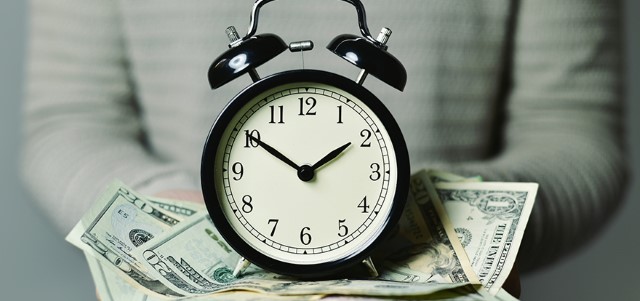Interval Funds—6 Things to Know Before You Invest

Interval funds are closed-end investment companies that might appeal to investors looking for different ways to diversify their portfolio by providing access and exposure to illiquid strategies or alternative assets. These funds, which don’t trade on an exchange, can provide individual investors with access to alternative investments that are otherwise typically limited to high net worth individuals, hedge funds and other institutional investors. But interval funds come with unique risks and characteristics and have a fee structure that may be higher than that charged by other types of funds.
1. Interval funds are illiquid. Interval funds are generally designed to hold greater allocations of illiquid assets, but to offer this exposure they provide less liquidity to investors. Unlike open-end funds, interval funds don’t offer daily liquidity, so you can’t just sell your shares whenever you want—or need—to. Instead, interval funds repurchase their shares from investors at prespecified intervals and in limited quantities. This restriction is generally in place due to the less liquid nature of the fund’s investments and allows fund managers to pursue returns without having to manage daily redemptions.
2. They’re called "interval" funds for a reason. When you invest in an interval fund, the fund is required to offer to repurchase a certain percentage of the fund’s shares at set periods, or intervals, at a price equal to the fund's net asset value (NAV). Depending on the fund, the repurchase offer could range from 5 to 25 percent of the fund’s assets. This repurchase option typically comes on a quarterly basis, but some funds operate with longer intervals such as every six months or annually. You aren’t required to take advantage of the interval repurchase option, but you can only exit the fund at certain points. And, importantly, while the fund may offer to repurchase a certain percentage of shares, if repurchase requests from investors exceed that amount, you might not be able to sell as many shares as you had intended. Also note that you won’t know the exact price you’ll receive for selling your shares until a specified date after you accept the repurchase offer. Be sure to read the fund's prospectus to understand the intervals applicable to the fund you’re considering and what percentage the fund will repurchase at each interval. (If you've already invested in an interval fund, the fund will also send you notifications of upcoming repurchase offers.)
3. Interval funds are classified as closed-end funds but don't always act like them. Interval funds share characteristics of both closed-end funds (funds that issue a fixed number of non-redeemable shares) and open-end funds (funds that create new redeemable shares on a continuous basis to meet demand from investors). Like closed-end funds, interval fund shares aren’t redeemable and, as noted above, the fund won’t repurchase your shares whenever you want. If you invest in an exchange-listed closed-end fund, you can still sell your shares on the exchange whenever you want just like stocks; however, the share price you sell them for may be higher or lower than the NAV. Unlike a typical exchange-listed closed-end fund, interval funds usually don’t trade on a securities exchange or other secondary market, and they offer guaranteed (but limited) liquidity through periodic repurchase options at the fund's NAV. In addition, you can purchase shares in an interval fund on a daily basis at NAV, similar to an open-end mutual fund.
4. Interval funds can invest in a diverse mix of assets, including private securities. Interval funds can provide exposure to less accessible alternative investments, which might offer the potential for additional income or returns beyond typical stock or bond investments—the “illiquidity premium”—as well as performance that may be less correlated to these traditional investments. Assets that make up an interval fund can vary and might include commercial property, such as tracts of farmland or forestry land, hedge funds and other private equity funds, business loans, catastrophe bonds and real estate securities. Before investing in an interval fund, carefully read all of the fund's available information, including its prospectus and most recent shareholder report, to make sure you fully understand what makes up the fund's investment pool. For example, while most mutual funds may not invest more than 15 percent of their assets in illiquid assets, interval funds aren’t subject to this same limitation. (Money market funds have even stricter liquidity requirements.)
5. Interval fund investments can be costly. Interval fund fees and expenses tend to be higher than other closed-end funds and mutual funds, which might be explained in part by relatively higher costs of investing in the underlying assets or more specialized management expertise. Interval fund fees vary, and, like other funds, include management fees and service fees, as well as potential additional front-end sales charges. In addition, “repurchase" fees are typically charged by interval funds to help the fund pay for expenses related to the administration of the periodic repurchases. You can find specific information about interval funds, including fund filings, on the SEC’s EDGAR site.
6. Interval fund distribution rates might not tell the whole story. You might be drawn to interval funds' relatively high distribution rates compared to those of other closed-end funds or mutual funds. But remember, distribution rates aren’t the same as total returns. A fund's distribution rate is calculated by annualizing the most recent amount paid per share to investors and dividing the resulting amount by the fund's NAV. The distribution amount may come from some combination of interest earned on fixed-income portfolio holdings, dividends from equity holdings, realized capital gains, and return of capital. Some investors might mistakenly believe that this rate consists solely of income (from dividends and interest) plus any capital gains. Pay attention to whether a fund's distribution rate includes a return of principal or capital (meaning the amount you invested) or other non-income components, since different distribution sources can result in different tax consequences. Consult with a tax advisor to understand the potential tax implications of investing in these products.
Before investing in an interval fund, evaluate whether the product is right for you and the level of risk you’re willing to accept with your investments. Consider whether a long-term commitment is within your financial means or whether you might need access in the short term to the capital you’re thinking of investing. And don't ignore the costs and fees associated with products promising higher yields and novel investment opportunities (as well as potential tax complexities). Expenses can ultimately eat into the higher yields you were searching for in the first place.
Learn more about investing and investment products.



